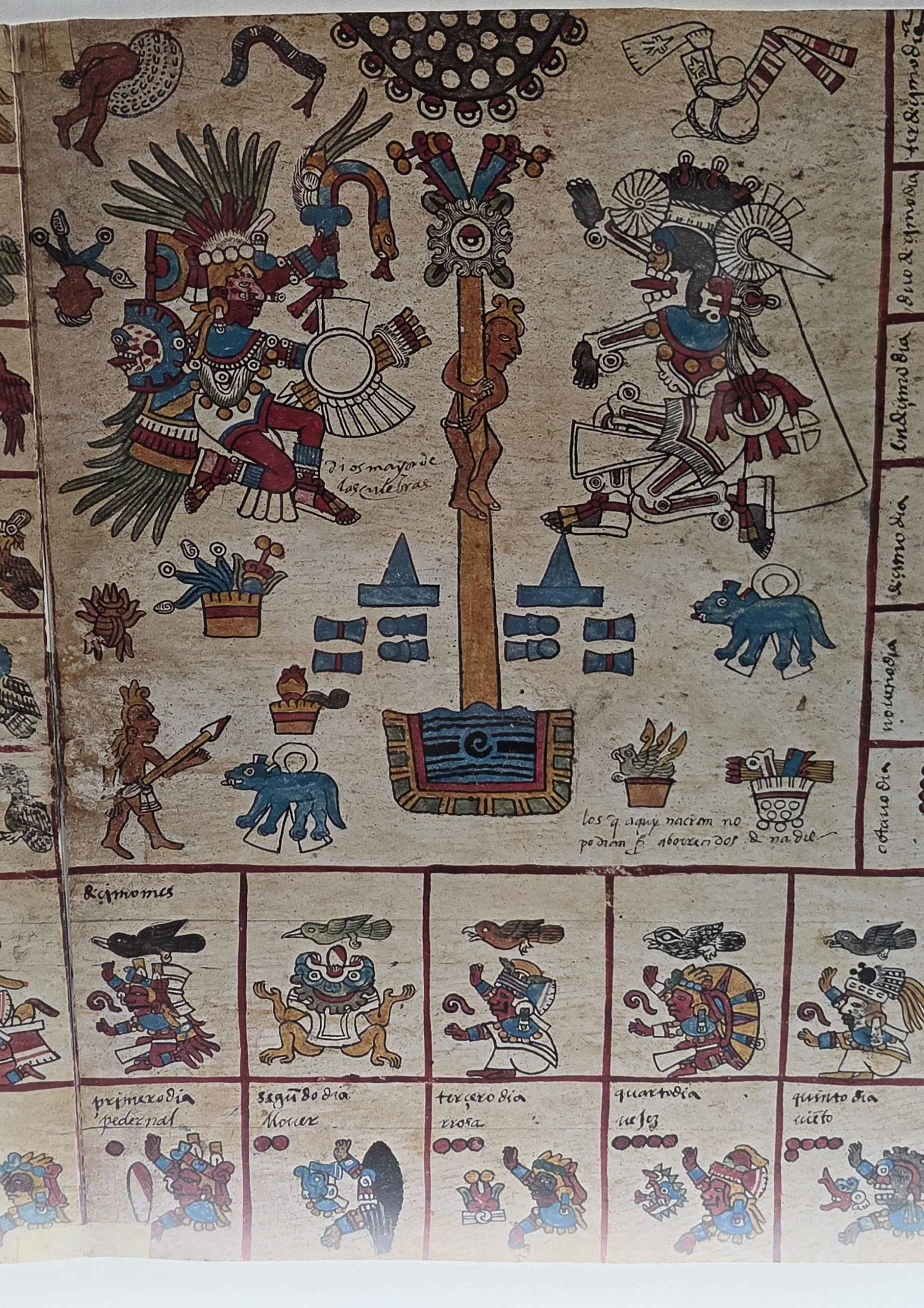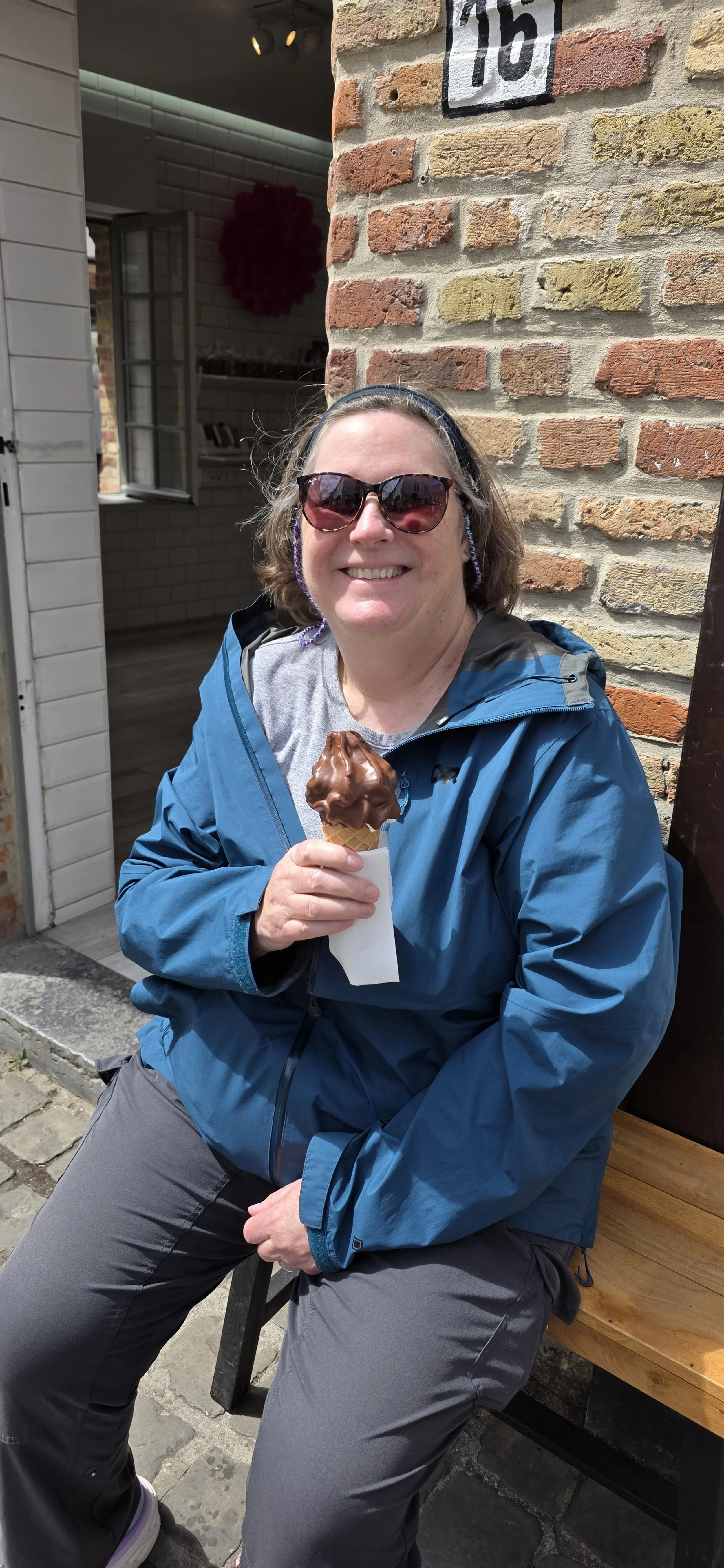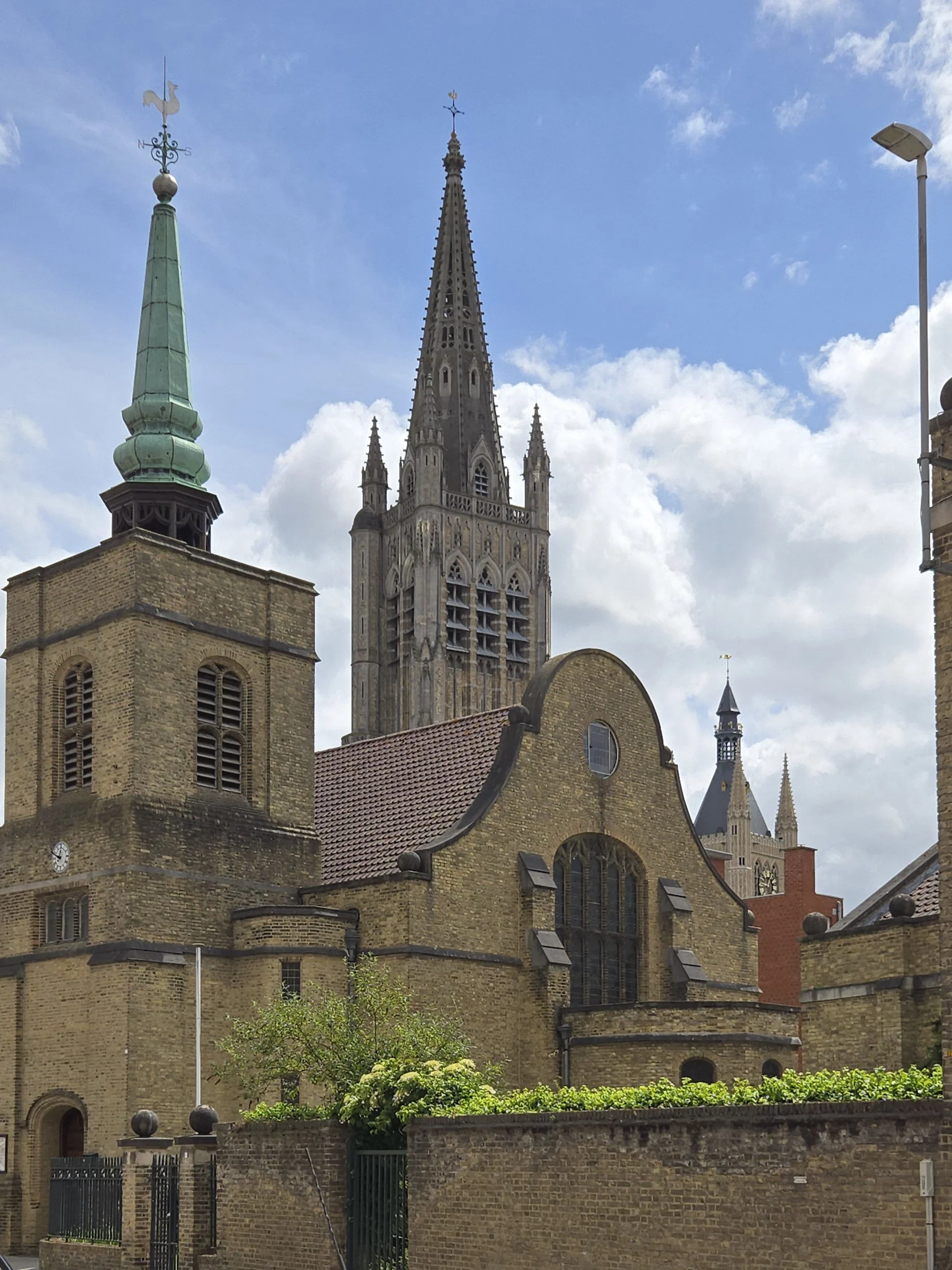Bruges
23 to 26 May 2025
Friday 23 May 2025 - Julie and Anthony picked up the car at the Brussels Midi Train station and drove down to Brugge.
Belfort in Brugge Market Square
After we parked the car, we walked over to the Grote Markt for dinner. While we were there a balloon flew over the square.
Julie had Kwak Cherry Lambic, sweet, but not as sweet as the Kriek. Anthony had the Kwak dubble, in a fancy glass
Annunciation, Hans Memling, circa 1467
Saturday, Julie and Anthony visited the Groeninge Museum. The museum displayed an overview of art in Brugge from the 15th century into the 21st.
Death and the Miser, Jan Provoost circa 1521
Last Judgement, Hieronymous Bosch, circa 1500
The Assault, Rene Magritte, 1932
Another yard art that makes Julie want to take welding classes when we get back to Raleigh.
Views from the bridge a block from our hotel, Martin’s Brugge.
Julie and Anthony visited the History of Chocolate museum. While cocoa originated is South America, it was perfected by the Olmecs, Aztecs and Mayans. Cortes imported Coca to Europe in the eary 1500s.
As with Crystal in Waterford, The chocolate artisans in Brugge sculpt chocolate. You may be surprised to know, Anthony did not photograph the chocolate breasts.
Sunday morning, Julie and Anthony caught a boat ride through the Brugge canals.
Julie could live here
Julie navigated us back to a spot she saw from the boat, where we had lunch and watched the canal.
Add Albertus Trippel to our list of Belgian beers!
Deja Vu: Anthony is pretty sure he took this exact photo when we were in Brugge in 2000.
We found Dip Cones. Better than Dairy Queen!!!
Julie spotted an upstairs bar in the Museum on Market Square, so we went there to have beers before our “Ghost Tour”. We chatted up Aussies from Murray River area, who were in Europe for a wedding on Anglesea (Wales).
We scored 3 more Belgian Beers, Duvel 666, Maredsous Dubbel and Hoegaarden weiss.
That evening we had a Dark History tour. The guide was not the best, but we went through Brugge neighborhoods that tourists would not normally go through.
The worlds first “Stock Exchange” was established at the Bourse in Brugge in 1309. Brugge was a center of cloth manufacturing in the 13th and 14th century, trading for wool from Ireland and Scotland and selling to the rest of the world.
In the 1400s Brugge was one of the 4 largest cities in the world. Following the death of his wife, Mary of Burgundy (a favorite in Brugge), in 1482, Emperor Maximilian became regent of the Burgundian Netherlands. Maximillian levied taxes on the Belgian cities (including Brugge, Ipres, and Antwerp). In 1488, the citizens of Brugge detained Emperor Maximillian for 3 months, demanding autonomy from the empire. Maximilian's father, Frederick III, intervened with an army to secure his son's release. In retribution, Fredrick III forced all of Brugge’s merchants to move to Antwerp, making Brugge a ghost town.
In 1892, novelist George Rodenbach made the city into a character in his novel Bruges-la-Morte, meaning "Bruges-the-dead". Bruges-la-Morte was one of the first travel books, containing actual photos of Brugge. Readers flocked to Brugge to see the city depicted in the novel, making it a tourist destination. This has lead to an economic revival in Brugge.
The bear is the Brugge city symbol
One of the remaining gate houses into the city
On Monday, Julie and Anthony stopped by the Flanders Fields Museum in Ypres on our drive to Rochefort. The museum highlighted the events of World War I in Belgium. The Germans invaded Belgium in August 1914, establishing a front, consisting of a network of trenches and tunnels across Belgium. The Germans first used chlorine gas in the Battle of Ypres, April - May 1915.
In 1918, the Russian withdrew from the war, due to the Russian revolution back home. That April, the Germans attempted to break through the lines in a Spring Offensive. The Germans gained some ground, but the allies stopped their progress and pushed them back to the previous front. That summer, the American Forces joined the conflict. The Germans surrendered on 11 November 1918.
Anthony climbed up the tower to get arial photos of the surrounding town.
The bells in the tower rang while Anthony was on the way down, quite and experience up close and personal.
Before leaving Raleigh, Anthony shipped his clarinet and tracht to our host family in Germany. Whilst in Europe, he noticed the package was delayed at the Cincinnati airport. More on the saga of the wayward clarinet will be included in future installments.











































































